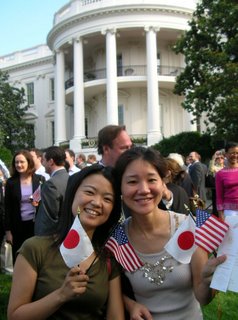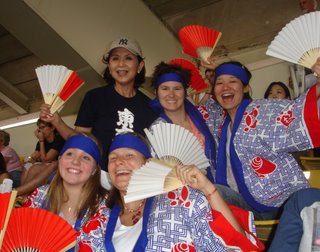First-Ever Japan-America Summer Picnic

Join us on Saturday, July 22 from 3:00 to 7:30 pm at historic Fort Ward in Alexandria for our first-ever “Natsu-Atsu” summertime picnic. It will be a Japan-America cross-cultural event featuring summertime foods from both countries, from onigiri and yakitori to hot dogs and corn on the cob – plus ice tea, lemonade, beer and wine.
Join us later in the Greek amphitheatre for a rocking concert by Nen-Daiko, Washington’s greatest taiko Japanese drum troupe.
There will be plenty of activities for children, visits to the Fort Ward Civil War Museum, and lots of time to walk the 43-acre park and see the Civil War cannon and defenses.
To top it all off, we will be giving away two tickets on Southwest Airlines (to anywhere it flies) plus a $50 gift certificate for J-Life International, an on-line store of Japanese products.
There is ample parking available in the park grounds, or you can park next door at St Stephen’s & Agnes School and walk directly into our picnic area. We have reserved the entire southwest area of the park for our event. (See the attached map.)
For more information, and to make reservations, please go to our website at http://www.us-japan.org/dc/programs/NatsuAtsu.pdf. Your friends and guests are most welcome to join us. Tickets are $25 for members and their guests and $30 for non-members. Children 8 and under are $12. Reservations should be made by July 16.
To learn more about historic Fort Ward, please go to http://oha.alexandriava.gov/fortward/. Fort Ward is just one mile from I-395 and is very near the Inova Alexandria Hospital.



